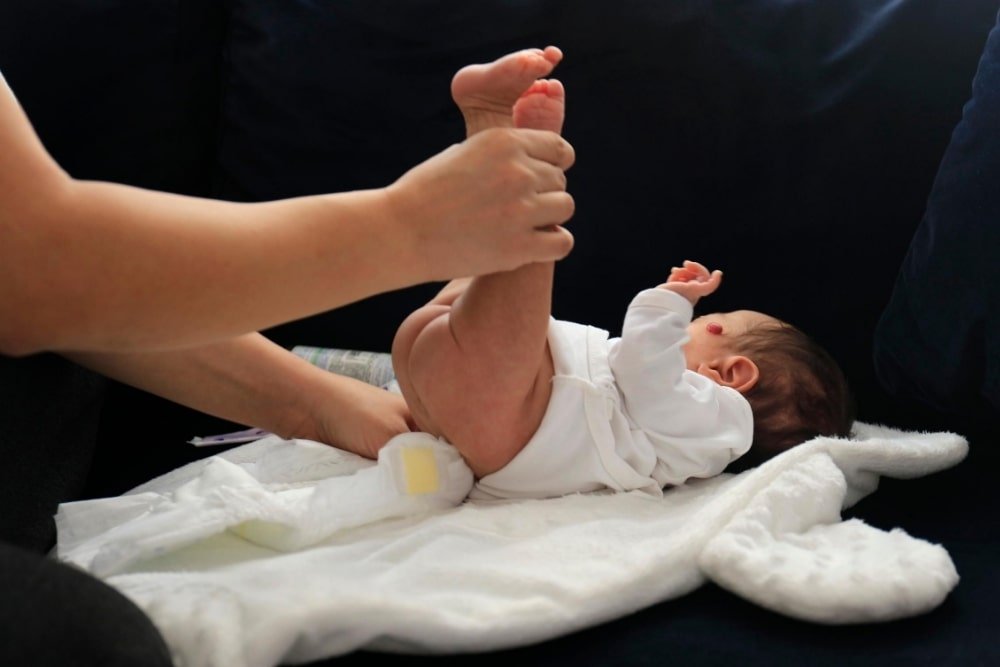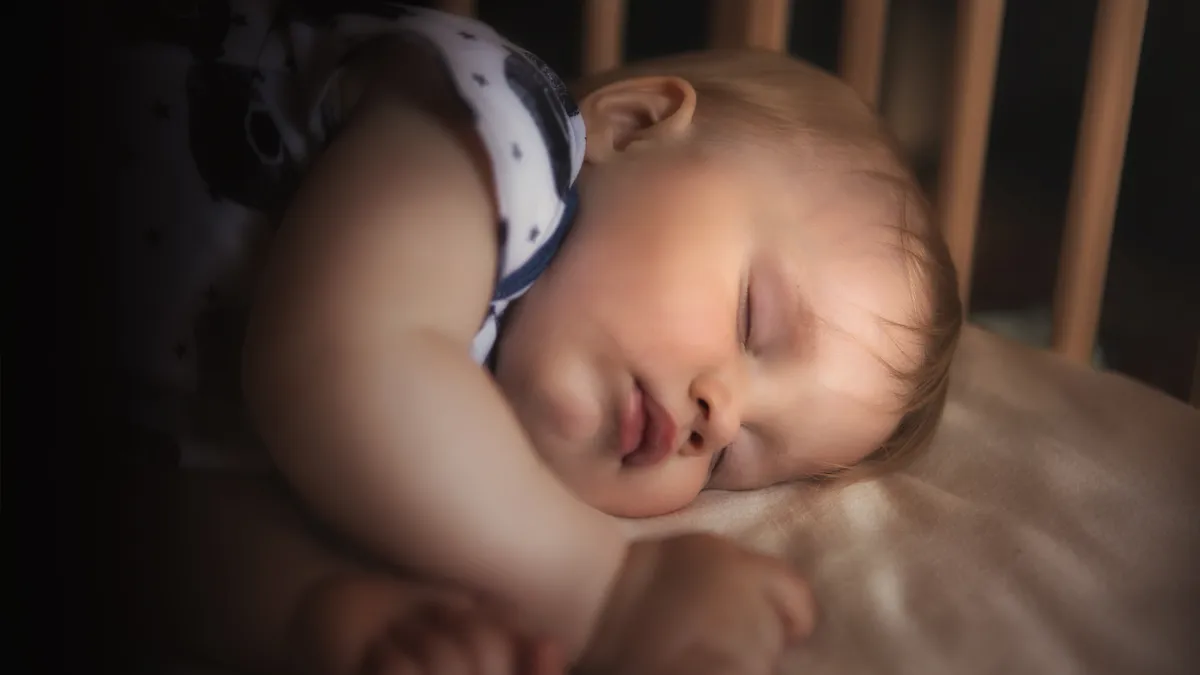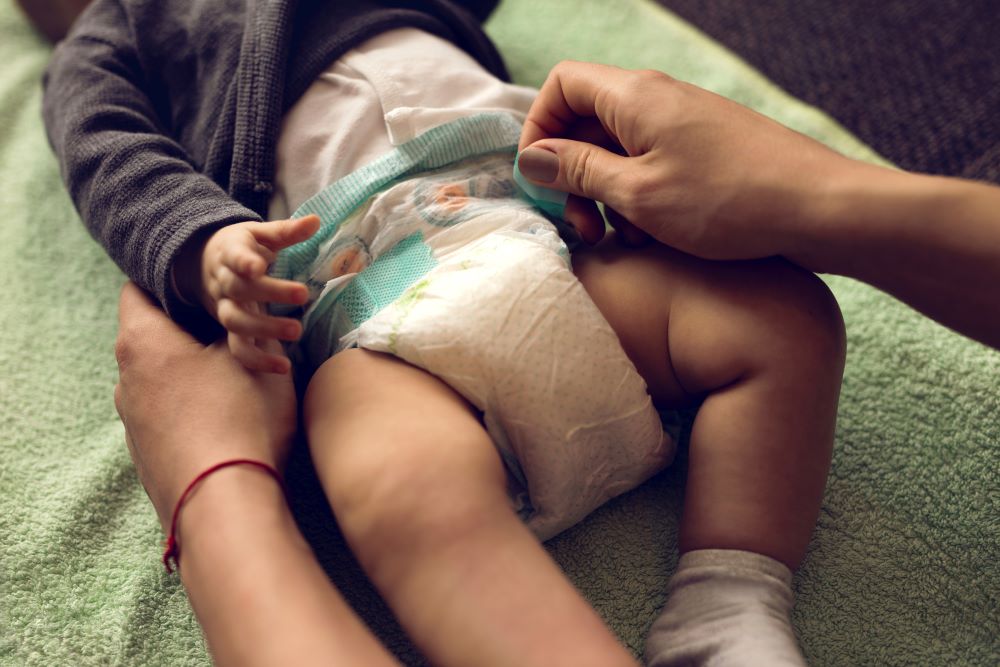Nighttime diaper changes can be challenging to master, particularly if your baby gets fussy and refuses to go back to sleep after being changed. However, you might also worry about the consequences of letting your baby continue to sleep in wet or soiled newborn clothing, afraid that they might be uncomfortable or develop a diaper rash.
When you need to change your baby during the night, you don’t want them to fully awaken and perhaps take hours to return to sleep. Thankfully, nighttime diaper changes can become easier once you establish the right routine, diapers and environment. The following tips will simplify the diaper-changing process so that your baby (and you) can get some well-deserved rest.
1. Be Confident With Your Diaper Changes

The key to being confident with your nighttime diaper changes is to establish a good routine. With an effective routine in place, you’ll be able to complete your diaper changes faster, with less disruption to your baby’s sleeping. Per the Centers for Disease Control and Prevention, following these diaper changing steps will help protect your baby’s health:
- Step 1: Lay your baby on the area prepared for diaper changes and unfasten their diaper while maintaining your baby secured.
- Step 2: Use a fresh baby wipe to clean your baby, front to back.
- Step 3: Remove the soiled diaper from the baby, folding the diaper close.
- Step 4: Replace your baby’s diaper by putting a fresh diaper under the baby.
- Step 5: If the baby needs diaper cream, slather a bit on.
- Step 6: Fasten the baby’s diaper and dress the baby in a warm, soft outfit to help them sleep.
- Step 7: Make sure the baby’s hands are clean.
- Step 8: Place the dirty diaper in a diaper pail or a plastic bag-lined and lidded trash can.
2. Keep All Your Supplies Organized
You want to avoid running around looking for diaper supplies when your baby is crying and ready for a change. So, before putting your baby down to sleep, you should organize all the supplies you might need for a diaper change: fresh diapers, wipes, cotton balls, diaper cream, several sleeping outfits, a replacement changing mat and a diaper pail. Ideally, you will also want to have your wipes warmer.
You should also include clean water and small towels in case you need them. Keeping all these supplies stashed under your changing table or on a designated shelf close to where you will change your baby will help you complete the diaper-changing routine faster during the night.
3. Create a Warm, Comfortable Environment

The middle of the night is not the time to put bright, harsh lights that will wake the baby up. Instead, you want to create an environment that invites sleep. Keep the room warm, the lights low and the noise to a minimum. A low-light lamp near the baby’s changing area that allows you to see clearly but is not disruptive is useful.
You will also want to avoid interacting too much with your baby, which might awaken them fully. Instead, be gentle but matter-of-fact about changing the diaper, completing the process quickly and silently. Additionally, you will want to dress your baby in snuggly baby boy pajamas or baby girl pajamas so they can be comfortable and comforted, ready to continue sleeping after their change.
4. Choose the Right Diaper and Nighttime Clothes For Your Baby
Diaper accidents happen, but you want to avoid them as much as possible during the middle of the night. One way to do this is to choose diapers that are the right size for your baby. Dedicated nighttime diapers can help save you from an unwanted surprise. They can also help make your nighttime diaper change easier. Like choosing the right diaper, you will want to choose the right pajamas. Choose sleepwear that will be soft on your baby’s skin so you don’t have to worry about the baby being uncomfortable and accidentally waking up.
5. Timing Is Everything

As you establish your diaper-changing routine, think about timing. You might want to change the diaper before you lay them down for the night. This might help both you and the baby get some more sleep time. However, you might also have to change the diaper several times at night. This will depend on many things, including how often the baby feeds during the night and whether they have a wet or soiled diaper. It might be okay to let the baby sleep if they only have a wet diaper that is not too full.
However, a soiled diaper or extended exposure to fully wet diapers can lead to skin irritation and infection, so you will want to change that diaper as soon as you notice. If your baby needs a change, a good time to do so is before you feed the baby or during the feeding itself. This will help you finish the feeding after the baby has already been changed and help the baby fall back asleep with a full belly.
Prioritize Your Baby’s Sleep
Making your baby’s nighttime diaper changes easier is prioritizing your baby’s sleep. Sleep is important for babies, and while it might take a bit of time to get into a nighttime sleep routine, the diaper change should not become an obstacle to getting the sleep they need. A little preparation goes a long way toward making your nighttime diaper changes easier.



